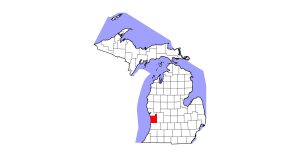Disease Maps, Surveillance System Help Navigate Outbreaks
In order to mitigate the consequences of a disease outbreak, it is important to understand where the disease is spreading. Thanks to a surveillance system designed by Jacqueline Smith, PhD, MSc, BSc, Dipl. AVES, UKVDL epidemiologist; adjunct professor of epidemiology at Lincoln Memorial University Harrogate, Tennessee; and founder of the UKVDL Disease Mapping Initiative, we can now do just that.
Smith’s database records all of the cases that come through the UKVDL representing eight different species and over 30 diseases. Each interactive map represents every county in Kentucky and all information is publicly available. By clicking on specific regions, users can determine when the case came in, the species affected, the affected animal’s age and breed, disease (final diagnosis), and county. All of the owner’s information remains confidential to the public.

The system updates automatically each day at 5 a.m., so cases entered today will be visible on the maps tomorrow. Smith’s mapping system also includes a historical map representing all the cases that have come into the laboratory in the past 30, 90, and 365 days. If users are only interested in seeing maps of equine-related diseases, Smith has further divided case reports by species. The equine maps are divided into diagnostic testing, abortions, and necropsy maps covering diseases such as EHV-1, nocardioform placentitis, equine influenza, and leptospirosis
Create a free account with TheHorse.com to view this content.
TheHorse.com is home to thousands of free articles about horse health care. In order to access some of our exclusive free content, you must be signed into TheHorse.com.
Start your free account today!
Already have an account?
and continue reading.
Written by:
University of Kentucky College of Agriculture, Food and Environment
Related Articles
Stay on top of the most recent Horse Health news with















